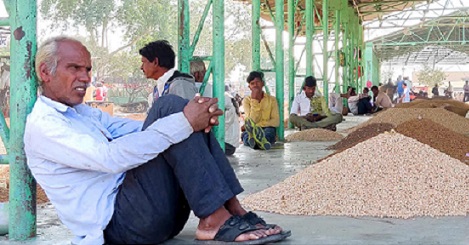Most of us know that the fate of farmers’ agitation depends if the Centre agrees to their guaranteed Minimum Support Price (MSP) demand on Thursday.
So what’s MSP?
MSP is the price at which the government purchases crops from the farmers. This was first announced way back in 1966-67. It was for wheat only which again is in the focus. Green Revolution had brought in surplus in the agriculture market and the farmers needed to be saved from falling profits. Now of course this MSP extends to two dozen crops, announced at the beginning of each season of Rabi and Kharif.
So, if the crops have had a bumper harvest, the government purchases at the MSP to make up for the farmers as the surplus drives the market price down. The government decides on MSP after recommendations from state governments, ministries and dedicated Commission. There are other factors like drought and floods which matter.
Sure, the MSPs are not static. In October 2019, the government had increased the MSP of rabi crops. In June this year, in order to help farmers, the Centre increased the MSP of 14 Kharif crops. (A week later though, thousands of maize farmers from Madhya Pradesh sat on a Satyagraha Andolan. They too wanted an MSP on their produce.)
Since 2009, the MSP on a crop is based on cost, demand, supply, changes in prices, market trend and international prices. The cost of labour, as per market rate, is also factored in.
So look at it this way: if the harvest is bumper, and the market price is low, the MSP would make up for the shortfall. Now keep this at the back of your mind: For the market price could be MANIPULATED.
And who manipulates market prices? Those who control market. In today’s India, the market is controlled by big mandis, who in turn is controlled by big farmers, who in turn are hand in gloves with the politicians and secessionist forces.
Here is the catch. There is only a certain percentage of crops which the government buys under the MSP. The farmers still have to go to mandis nearby for the rest of the crops which are controlled by middlemen at the behest of rich farmers and politicians. Invariably, that price is kept lower than MSP. A farmer still ends up as a loser.
An example. MP farmers were on “Satyagraha” this June because the maize MSP was Rs 1,850 but in market it was Rs 900-1,000 per quintal. Now look at this double whammy in simpler terms: I am a farmer, the MSP on my crop is Rs 100 which the Centre has calculated on the basis of my costs which, say comes to Rs 80. But the market is selling it at Rs 60. So I am not only losing out on MSP even in market I am getting Rs 20 less even on my investment. Go figure that out.
Let’s take the reverse of this example. Let’s say the harvest is low on cereals. Now almost two-thirds of the total cereal production is through MSP. Only one-third is left for open market. So if the harvest is low, the farmer can’t make most from the rise in demand. He has to depend on the MSP which could be lower. He can’t make profit. So, if a farmer leaves producing cereals, it affects consumption pattern of citizens too.
Does one know what MSP does to India’s trade with other countries? Many have complained in the World Trade Organization (WTO) against India. Australia has complained on what, US and European Union have on sugarcane and pulses. These MSPs have been termed trade-distorting, breaching the 10 per cent norm for subsidy on farm production, set down by the WTO.
Sure, this piece is not enough to bring an entire White Paper on MSP but an additional point need be mentioned:
States could now intervene in the agricultural markets to ensure that the prices don’t fall steeply. The losses States suffer, 40 percent of it would be borne by the Centre. (In case of north-eastern states, it’s up to 50 percent).
Do you know that the Organisation of Economic Cooperation Development and the Indian Council of Agricultural Research (OECD-ICAIR) reported that farmers lost Rs 45 lakh crores (phew!) due to manipulated pricing between Rs 2000-2017?
Do you know that the Shanta Kumar Committee in 2015 reported that only 6 per cent of the MSP could be received by the farmers, implying that 94 per cent of India’s farmers were deprived from the benefit of the MSP. That only a crore out of 14.5 crore farmers benefitted out of MSP?
Do you know that In 2016, NITI Aayog had revealed that only 10 percent of the farmers were aware of the right prices before the sowing season?
It would be a huge betrayal of India if the Centre was to agree to the agitating farmers’ demands of fixed MSP. The talks are bound to fail and must fail. If they don’t, BJP would lose support of majority of Indian farmers, not to say millions of Indians like me who want this caucus, this nexus of corrupt and secessionist forces driven into the Arabian Sea.


